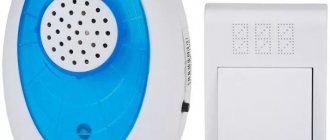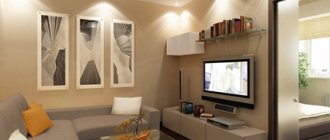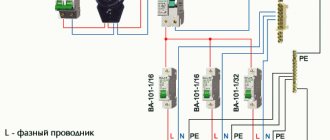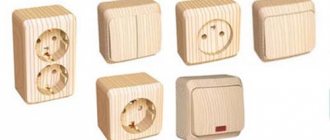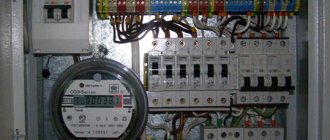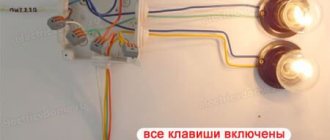Installation of internal lighting systems is not an easy task, associated with serious material and labor costs. Open wiring will not decorate the interior. To install hidden wiring, you will need to cut and gouge grooves - grooves in stone and reinforced concrete walls and partitions, and drill sockets for distribution boxes and switches. The problem becomes especially acute if you need to install additional lighting fixtures after renovations in the room. A wonderful way out of this situation would be to purchase a wireless switch. The editors of the YaNashla website will help readers take a closer look at this new product on the electrical goods market and present a rating of the best wireless switches for 2022, compiled based on customer reviews and expert recommendations.
What is a wireless switch for?
Remote systems that provide control of certain devices at a distance are becoming increasingly widespread. The wireless wall switch is no exception.
It was created to increase comfort, and for senior citizens and people with disabilities it is absolutely necessary.
Using such a device, you can easily control the lighting in your home, change the brightness, turn lamps on and off.
In addition, thanks to the special design, there is no need to damage the walls or make large holes for installation.
Scope of application
Traditional switches are gradually becoming a thing of the past due to inconvenience of use, complexity of connection and installation, as well as a small resource. Wireless analogues have better qualities.
They have a stylish appearance and install within a few minutes.
The use of such products is relevant in the following cases:
- When moving an old switch, when pieces of furniture interfere with its installation. The new device can be mounted anywhere in the room - on a wall, mirror, cabinet or other element of the room.
- To eliminate electrical errors. When installing wiring, mistakes are often made that affect the comfort of living in an apartment or house. In such cases, it is not necessary to make a strobe or plan expensive repairs - you can install a wireless switch (with or without a remote control).
- When there is a shortage of space. The classic option is that it is difficult to install the switch on a cabinet or other piece of furniture due to the complexity of the mounting. Wireless analogues are overhead, and their installation is accessible even to beginners. In addition, during the installation process there is no need to lay the cable and worry about its disguise. And the radio switch can be placed anywhere, be it a coffee table, bar counter, bedside table or other piece of furniture.
- In wooden houses. The advantage of buildings made using wooden materials is undeniable. They are distinguished by their durability, ability to retain heat, and also low price. But when installing wiring, problems arise due to increased safety requirements. The best option is to install open wiring, but it spoils the appearance of the interior and is susceptible to mechanical damage (including from rodents). Making hidden wiring in a wooden house is quite a problem. The best solution is to install wireless light switches, which simplify the process of installing hidden wiring and save money.
- To control lighting from multiple locations. There are situations when turning on the light needs to be done from 2-3 parts of the room. To avoid running wires to each switch, it is better to use wireless devices. With their help, lighting control is simplified and installation time is reduced. If desired, you can install wireless switches with a remote control.
- If necessary, install additional switches. It happens that after completion of the repair work the chosen location is not satisfactory and the installation of an additional device to control the light is required. Installing a wireless switch solves the problem.
- To turn lights on/off over long distances. What to do in a situation where you need to turn the lamp on and off from another room or even from the street? Running a wire to install an additional switch is expensive and unsafe, but new technology allows you to avoid such problems. The peculiarity of radio switches is their large operating range - up to 350 m (depending on the model). Control can be done using a simple remote control, which for convenience is made in the form of a key fob.
- In order to preserve the design of the room. If installing a switch in a recess is not possible, you have to install overhead types of products that spoil the appearance of the room and do not look very solid. The solution to the problem is to install a wireless device that is thin and fits perfectly into the interior.
- As an alternative to conventional devices. During the next renovation of an apartment or house, you want to introduce some innovations into the design and make life more comfortable. One way is to install a wireless remote switch. Such products will cost more, but they are easy to install, have a solid appearance and provide ease of lighting control.
Varieties
Wireless switches are not very diverse, but there is still a certain selection.
They are classified according to three main characteristics:
- By type of control;
- If possible, regulate the level of illumination;
- By the number of lighting devices they control.
Taking into account the classification mentioned above, the following types of wireless switches can be distinguished:
- With a delay function to ensure the lamp stays on for a certain amount of time. This option allows, for example, to walk to the bed while the light is on, after which the room is plunged into darkness.
- With the ability to configure multiple channels. In this case, it is possible to turn on several products simultaneously.
- Sensory. To turn the lighting on/off, just touch the panel.
- Wireless (with the ability to control over a Wi-Fi network) or radio controlled.
Design and principle of operation of the main elements of the device
The wireless switch consists of the following elements:
- The receiver is a special radio relay that is controlled by a remote control, using a phone with access to Wi-Fi, or directly from a switch. After receiving the signal, the relay closes or opens the contacts. The product is mounted as close as possible to the light source or inside it (if the appropriate dimensions are available).
If we are talking about a spotlight, installation is carried out in a junction box or in the cavity between the main ceiling and the tension fabric. - Transmitter (switch). This device includes a small generator that generates electricity when you press a remote control button, touch a switch, or send a signal from your phone (when controlled via Wi-Fi). The electrical impulse is converted into a radio signal, which is picked up by the receiver. The transmitter can be installed directly into the wall. In this case, there is no need to connect wires to it, because power is supplied from the built-in elements. Thanks to this feature, you can save time on installation and not open the walls. In this way, a transition switch is made that allows you to control the lighting from different points and not have to look for the remote control.
How to connect yourself
Connecting the switch yourself will not be too difficult a task. First, carefully study the receiver circuit. Then apply voltage (connect phase and neutral).
Only the phase is supplied to the switch itself, without zero, so the receiver is installed at the location where the chandelier (lighting fixture) is installed.
- It is usually installed at the base of the chandelier. To obtain the phase, turn on the switch or connect the wires directly, first turning off the power and checking that there is no voltage in the wires.
- Dismantle the old switch and make a continuous phase. To do this, the phase must be connected to one of the wires going to the chandelier. Always coordinate your work with the remote switch diagram.
- It shows in detail how to connect a remote switch. Next you need to combine the switch with the receiver. To do this you need to supply electricity. Next, select the desired operating mode.
- Once you have decided on the modes offered by the device, proceed to attach the device. To do this, the kit includes double-sided tape and dowels with self-tapping screws. Upon completion of installation, you can install a control lamp. Now you can safely check the operation of the system.
In the recent past, wireless switch technology has been one of the new, unavailable technologies. But thanks to increased competition in the market, the price of this gadget is noticeably reduced, which makes it possible for everyone to make a purchase.
Advantages and disadvantages of wireless switches
Despite their ease of use, wireless load switches (in our case, lighting) have not only advantages, but also disadvantages. But more about everything.
Pros:
- Ease of installation. For installation and connection, you do not need to drill into walls or lay a separate “branch” of electrical wiring.
- Possibility to control several light sources at once from the remote control or via a smartphone.
- Large range of action. The control signal in an open area can reach the receiver at a distance of up to 30 meters. In this case, walls or pieces of furniture are not an obstacle.
- Safety for adults and children. Even accidental damage to the structure does not pose a health risk. The operating current in wireless remote switches is minimal and not hazardous to health.
Minuses:
- The cost of such products is higher than classic “wired” switches. Adherents of economy and conservatives prefer familiar products.
- Inability to control due to low battery in the remote control or inability to control due to weak Wi-Fi connection.
Popular manufacturers
Wireless electrical equipment is produced by manufacturers from various countries:
- Wookee company - radio switches with/without remote control operate with 1–6 channels and a load in each line of 0.2–0.5 kW, the radio signal receiving unit is located in the installation box, the range is up to 30 m.
- NPP "Nootekhnika" (Republic of Belarus) - switches with a touch or push-button remote control for 1-3 channels are distinguished by excellent polymer quality, the products are equipped with a radio dimmer, the range is up to 50-100 m.
- COSO company (Holland) - the receiving part of compact radio switches is placed in a regular chandelier socket and works with high power consumers ≤ 3.5 kW, the remote control range is up to 30 m.
Characteristics you should pay attention to when choosing
When purchasing a wireless remote switch, you should pay attention to the following parameters:
- The type of light bulbs the device controls;
- Material, color and appearance of the case;
- Operating voltage;
- Number of channels;
- Radius of action;
- Maximum load;
- Dimensions;
- Rated current;
- Equipment.
It is also worth paying attention to the following criteria:
- Operating frequency range;
- Signal transmission method;
- Availability of encoding;
- Transmitter power type;
- Estimated battery replacement time;
- Fastening method;
- Operating temperature range;
- Price.
When you need light you press a key
Modern Stylish Functional
This is a remote switch. It's slim, runs without batteries* and requires no wiring. It can be placed anywhere. It transmits a signal to the control unit, which turns on the light.
* Kinetic microgenerator - The newest models of remote switches have a kinetic microgenerator that converts the mechanical energy of pressing a key into electrical current. This eliminates the need to replace batteries.
To store excess energy, a storage device has been added to the microgenerator, which can retain an electrical charge for quite a long time and ensures stable operation of the switch. The microgenerator has a resource of more than 1 million clicks. This resource is ensured by the almost complete absence of mechanical parts in its design.
What does the market offer?
A wide range of wireless remote switches allows you to choose a product based on price, characteristics and appearance.
Below we consider just a few models that the market offers:
- Fenon TM-75 is a remote-controlled switch made of plastic and designed for a voltage of 220 V. The features of the device include the presence of two channels, a 30-meter range, the presence of a remote control and a delay switch function.
A group of lighting fixtures can be connected to each channel and controlled. The Fenon TM-75 wireless switch can be used with chandeliers, spotlights, LED and track lights, as well as other devices operating on 220 Volts. - Inted 220V is a wireless radio switch designed for wall mounting. It has one key and is installed in conjunction with the receiving unit. The operating voltage of the product is 220 Volts, and the range is 10-50 meters. The wireless light switch is attached using self-tapping screws or double-sided tape. The body is made of plastic.
- INTED-1-CH is a light switch with remote control. With this model you can control light sources remotely. The power of the lamps can be up to 900 W, and the operating voltage of the product is 220 V. Using a radio switch, you can control the equipment, turn on and off the lights or alarms. The product is based on a receiver and transmitter. The latter has the form of a key fob, which is small in size and transmits a signal over a distance of up to 100 m. The product body is not protected from moisture, so additional protection must be provided when installing outdoors.
- Wireless touch switch controlled via remote control. The product is mounted on the wall, has small dimensions and is made of tempered glass and PVC. The operating voltage is from 110 to 220V, and the rated power is up to 300 W. The package includes a switch, remote control and bolts for attaching the accessory. The average life cycle is 1000 clicks.
- Inted 220V 2 Receiver - Wireless Light Switch for Wall Mounting. Control is carried out using two keys. The body is made of plastic. The operating voltage is 220 V. The number of independent channels is 2.
- BAS-IP SH-74 is a wireless radio switch with two independent channels. Control is carried out using a mobile phone on the Android operating system. To work, you must install the BAS application. The SH-74 model is used to control incandescent lamps with a power of up to 500 W, as well as fluorescent light bulbs (power limit - 200 W).
- Feron TM72 is a wireless switch that controls lighting at a distance of up to 30 meters. The light sources are combined into a receiving unit, and switching on and off is done using the remote control. The TM72 model has two channels, each of which can be connected to a specific group of devices. The product has a large power reserve per channel (up to 1 kW), which allows you to connect different types of light sources. The big advantage of the model is the presence of a delay ranging from 10 to 60 seconds.
- Wireless 3-channel switch 220V Smartbuy is designed for connecting light sources into three channels with a power limit of up to 280 W. The rated supply voltage is 220 V. Control is carried out from the remote control, which has a range of 30 meters.
- Z-Wave CH-408 is a wall-type radio switch that allows you to program various scenarios for controlling lighting devices. If necessary, up to eight switches can be connected to it. Among the additional features, it is worth highlighting the management of Z-Wave devices (up to 80) and ease of configuration regardless of the main controller. The device is powered by two batteries, and when they are low, a corresponding signal is given. Firmware updates are performed via the Z-Wave network. The maximum distance to the controller should not exceed 75 meters. Protection class - IP-30.
- Feron TM-76 is a wireless light switch that is controlled remotely using a radio signal. The receiver connects to light sources, and the remote control controls the receiving unit at a distance of up to 30 meters. The Feron TM-76 model has three independent channels, each of which can be connected to its own group of lighting fixtures. In this case, control will be carried out separately, using the remote control. The maximum power reserve is up to 1 kW, which allows you to connect various types of lamps (including incandescent). The operating voltage is 220 V.
Classification by type of control
Based on the control method, wireless switches are divided into three groups. The first includes electronic devices that control the lighting system using mechanical buttons. The second includes models with touch controls.
Wireless switches can have either one working key or 2-3. This makes it possible to connect several lighting devices to the control module at once. True, the cost of multi-key products will be slightly higher than that of analogues with one key
The third group consists of devices equipped with a remote control. It provides digital signals to a switch, which receives them and activates or deactivates the lighting fixtures.
When operating the switch, the remote control does not produce noticeable interference and does not negatively affect the operation of other equipment in the house. The movement of radio waves is not obstructed by walls, furniture, or any other vertical elements of the furnishings.
The presence of a remote control allows the owner to simultaneously activate up to 8 wireless systems and allows you to adjust the lighting in the entire apartment or house without leaving the couch.
The range of the device depends on criteria such as:
- general layout of the premises;
- specific design features;
- type of materials on which the working components are placed.
The switch itself is equipped with an autonomous power supply unit, which receives the necessary energy from rechargeable batteries. The range of remote controls is usually 25 meters. To properly service large premises, it is recommended to install a repeater, otherwise the supplied signal simply will not “reach” the receiving station.


